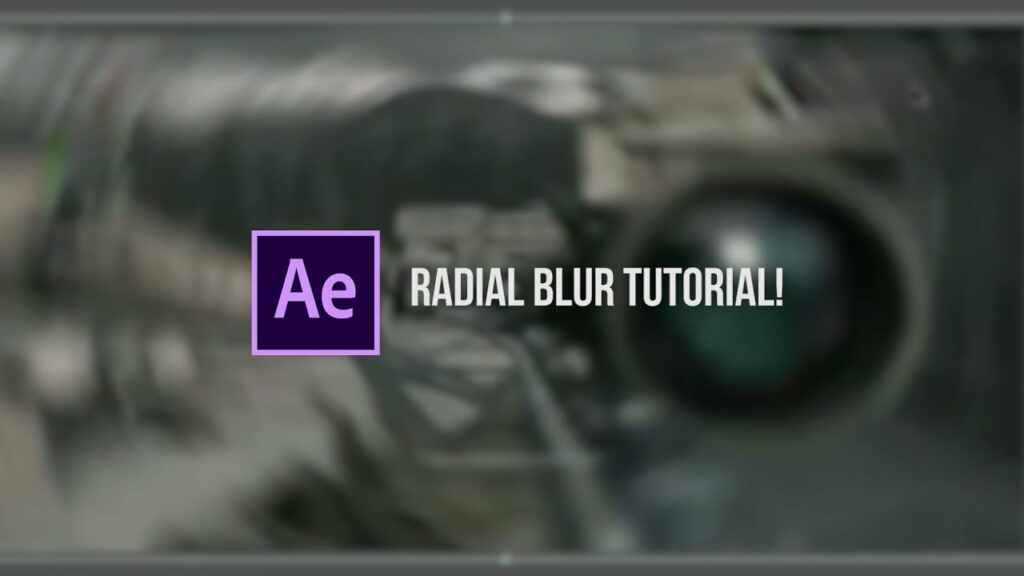Mastering Visual Effects: A Comprehensive Guide to Using the Radial Blur Effect in Adobe After Effects

Introduction: The Radial Blur effect is a powerful tool in Adobe After Effects that allows designers and animators to create dynamic and visually captivating motion blur effects. By applying blur radially from a central point, the Radial Blur effect can simulate various motion effects, including spinning, zooming, and radial distortion. In this comprehensive guide, we will explore the step-by-step process of using the Radial Blur effect in Adobe After Effects, from understanding its parameters to applying it creatively in your projects.
Understanding the Radial Blur Effect: The Radial Blur effect in After Effects creates a blur that radiates outward from a central point, simulating the motion blur caused by rapid movement or rotation around that point. This effect is commonly used to create dynamic motion effects such as spinning logos, zooming transitions, or radial distortion effects. By adjusting parameters such as amount, center, and quality, users can control the intensity and appearance of the blur effect to achieve the desired visual impact.
Step 1: Applying the Radial Blur Effect To apply the Radial Blur effect in Adobe After Effects, start by creating a new composition or opening an existing one. Select the layer or footage item you want to apply the effect to in the timeline. Then, navigate to the Effects & Presets panel and search for “Radial Blur.” Double-click on the effect or drag it onto the layer in the timeline to apply it. You will see the effect appear in the Effects Controls panel, where you can adjust its parameters.
Step 2: Adjusting Blur Parameters The Radial Blur effect offers several parameters for customizing the appearance and behavior of the blur effect. The “Amount” parameter controls the intensity of the blur effect, with higher values creating more pronounced blur. The “Center” parameter determines the position of the central point from which the blur radiates outward. Experiment with different center positions to achieve the desired focal point for the blur effect.
Step 3: Choosing Blur Type After Effects offers two types of blur for the Radial Blur effect: “Spin” and “Zoom.” The “Spin” blur type creates a swirling motion blur effect, simulating rotation around the central point. The “Zoom” blur type creates a radial zooming motion blur effect, simulating movement toward or away from the central point. Choose the appropriate blur type based on the desired motion effect for your project.
Step 4: Adjusting Quality Settings To control the quality of the blur effect, adjust the “Quality” parameter in the Radial Blur effect. Higher quality settings result in smoother and more accurate blur, but may increase rendering time and system resources. Lower quality settings may produce faster render times but may result in lower-quality blur with visible artifacts. Find the balance between quality and performance that suits your project’s needs.
Step 5: Keyframing Blur Animation To create dynamic motion effects with the Radial Blur effect, animate its parameters over time using keyframes. Set keyframes for parameters such as amount, center, and blur type at the beginning and end of the animation, then adjust the values to create smooth and fluid motion. Experiment with different animation curves and timing to achieve the desired motion effect, whether it’s a gradual spin, a sudden zoom, or a pulsating distortion.
Step 6: Applying Additional Effects For even more creative possibilities, consider combining the Radial Blur effect with other effects and techniques in After Effects. Experiment with effects such as Glow, Color Correction, or Fractal Noise to enhance the visual impact and atmosphere of the blur effect. Use masks, mattes, and blending modes to integrate the blur effect seamlessly with other elements in the composition, creating intricate visual compositions and dynamic motion graphics.
Step 7: Fine-Tuning and Previewing As you work on your Radial Blur effect, preview it regularly to assess its visual impact and quality. Play through the animation in real-time, making note of any areas that may need further refinement or adjustment. Pay attention to details such as blur intensity, center position, and animation timing to ensure a convincing and immersive blur effect. Make adjustments as needed to achieve the desired look and feel for your project.
Step 8: Rendering and Exporting Once you’re satisfied with your Radial Blur effect animation, it’s time to render and export the composition for use in your video projects. In After Effects, select “Composition” > “Add to Render Queue” to add the composition to the render queue. Configure the render settings, such as output format, resolution, and codec options, and click “Render” to export the final video with the Radial Blur effect applied.
Conclusion: The Radial Blur effect in Adobe After Effects offers a versatile and powerful tool for creating dynamic motion blur effects that enhance the visual storytelling and atmosphere of video projects. By mastering the fundamentals of the Radial Blur effect and exploring advanced techniques for customization and animation, you can unleash your creativity and bring your creative visions to life with stunning and immersive motion blur effects. Whether used for adding excitement to action sequences, creating dynamic transitions, or enhancing the ambiance of motion graphics animations, the Radial Blur effect offers endless possibilities for visual storytelling and creative expression. Experiment with different settings, techniques, and styles to create Radial Blur effects that captivate and immerse viewers, bringing depth, motion, and energy to your video projects.




